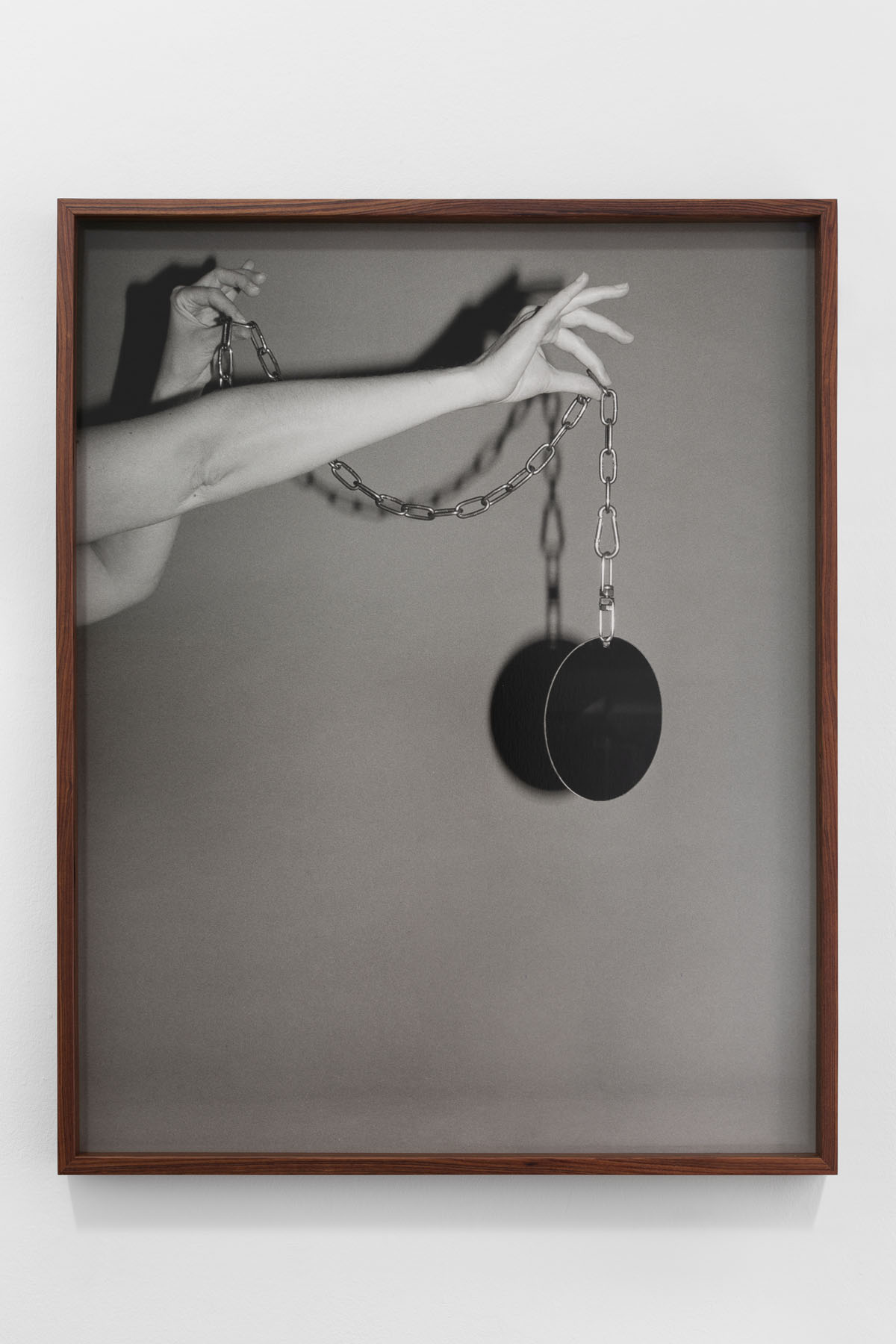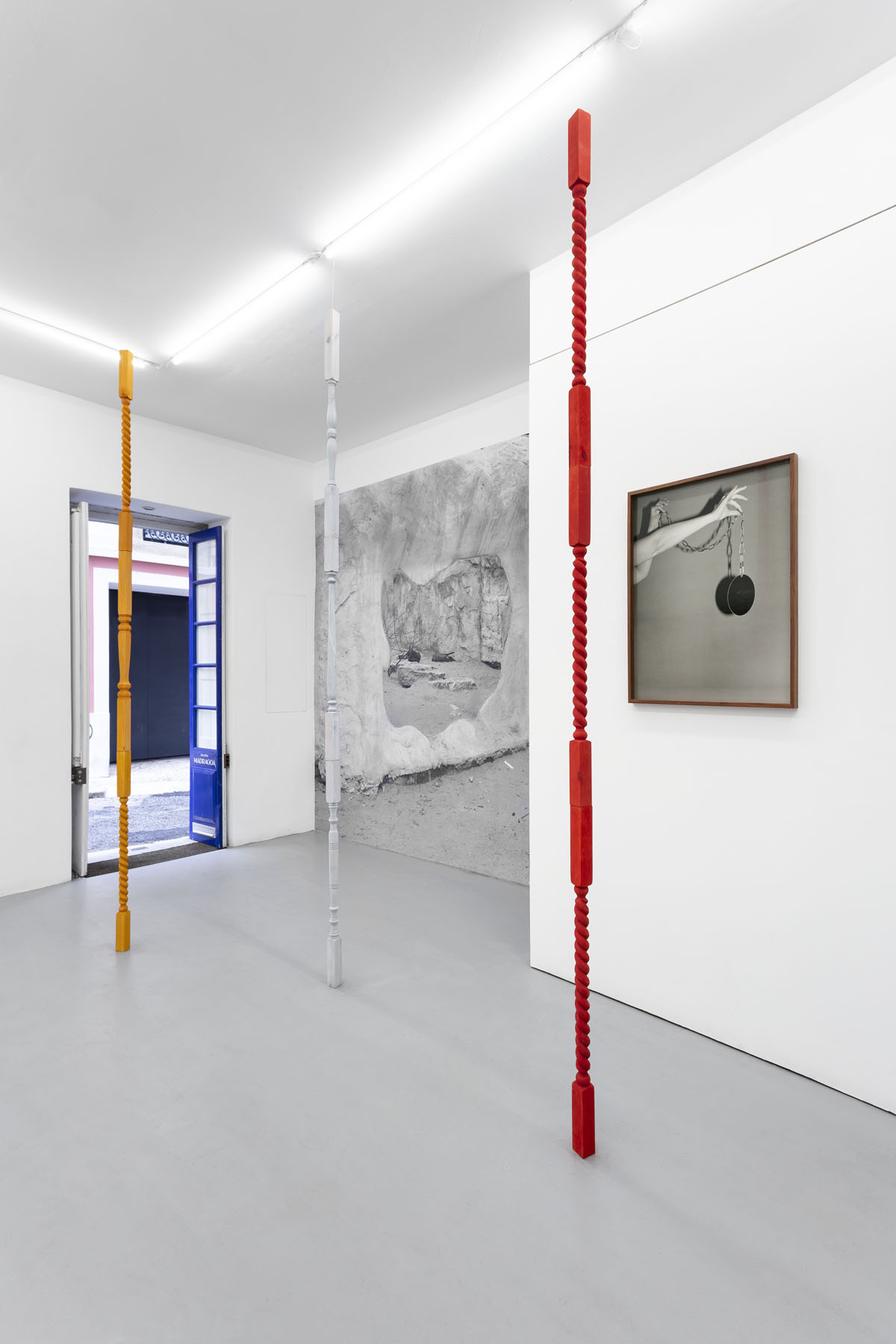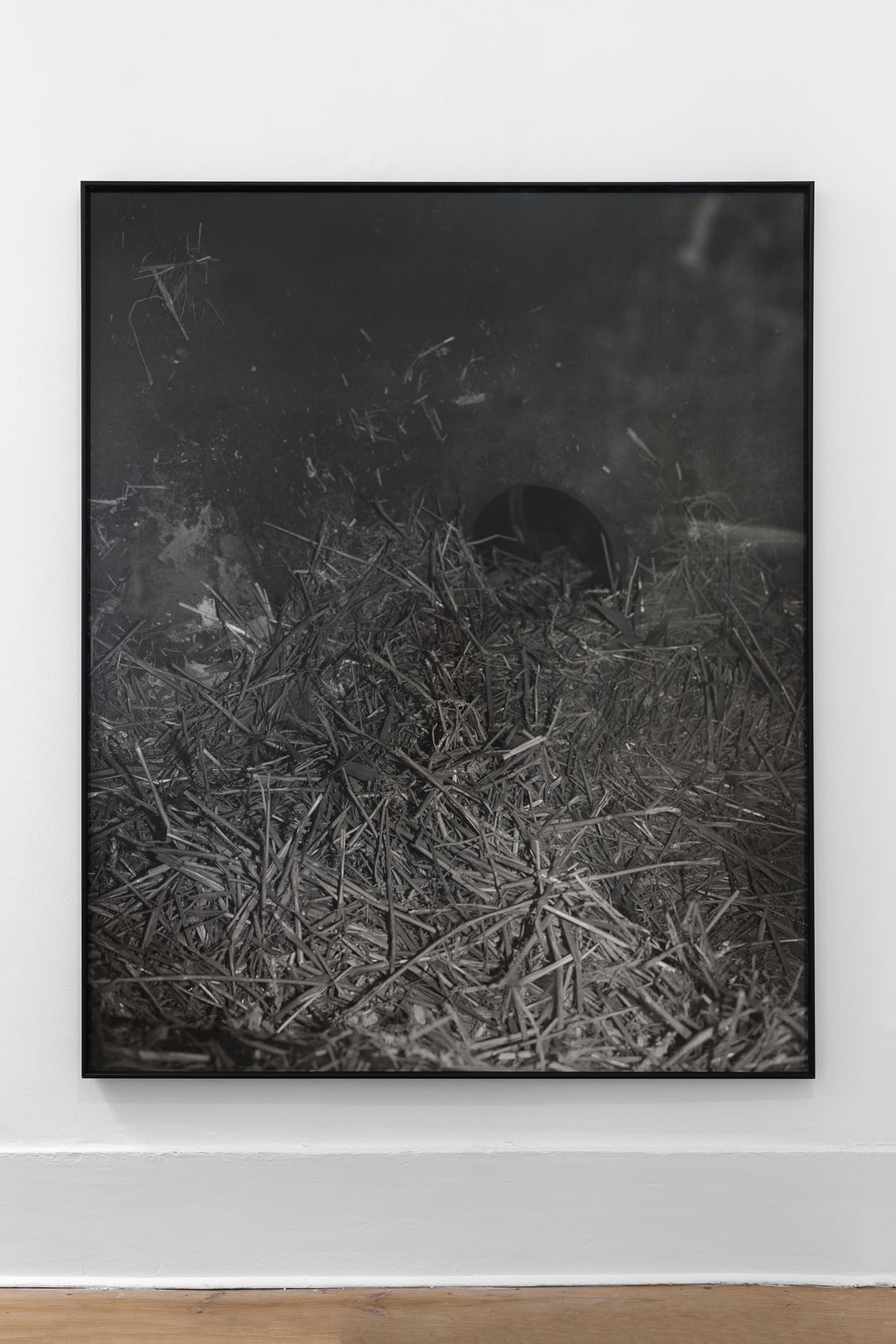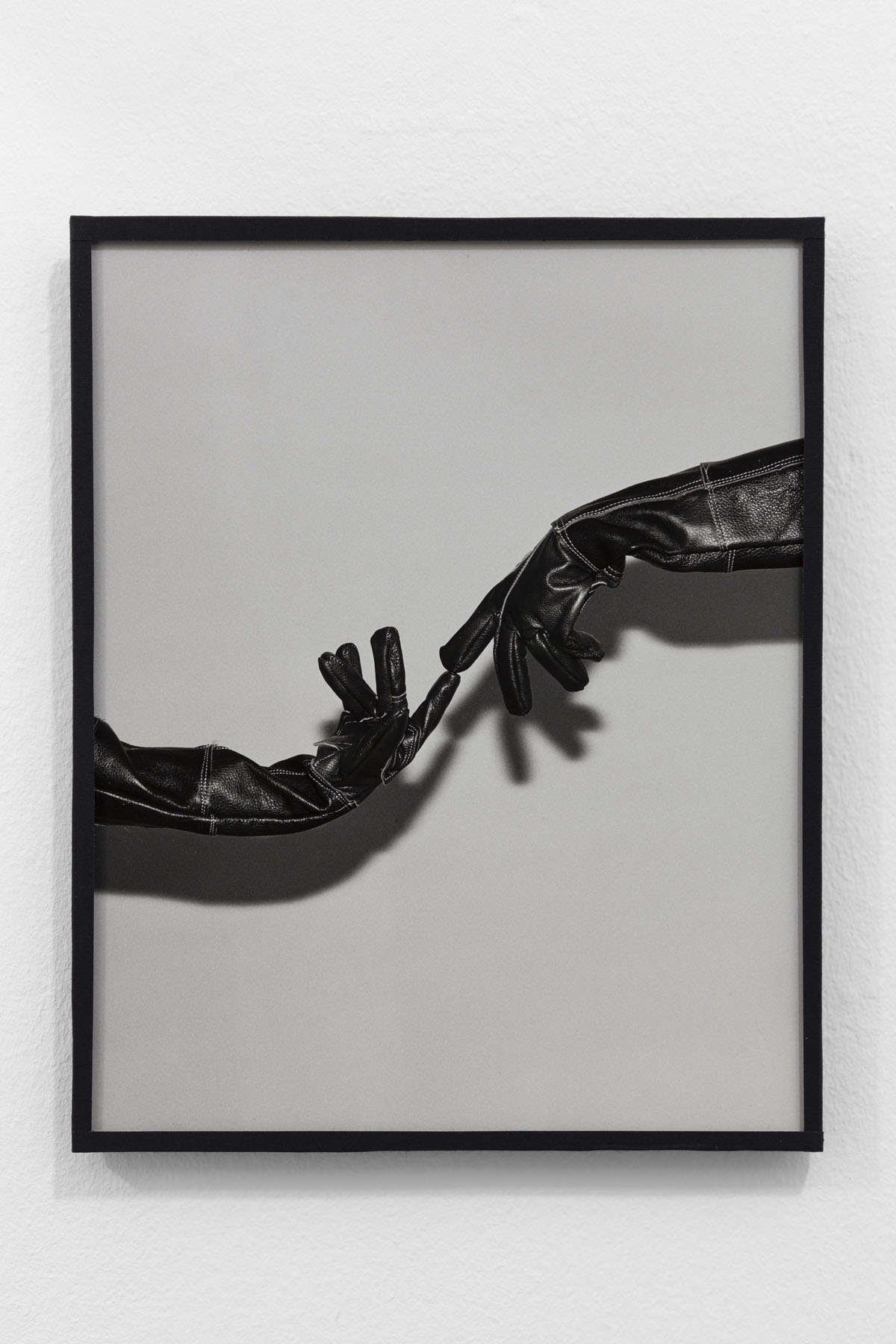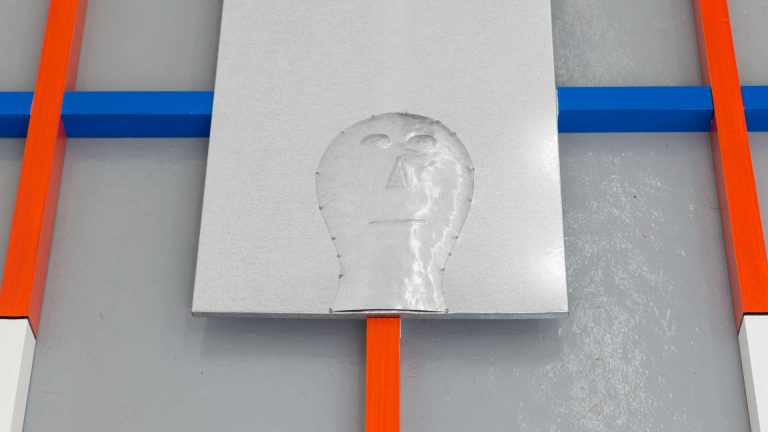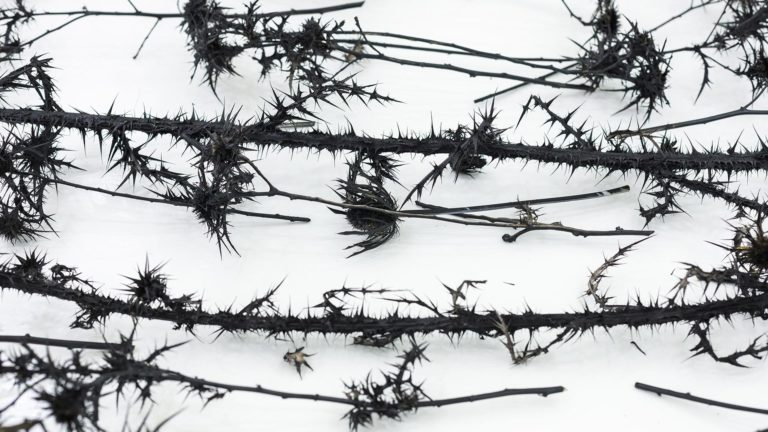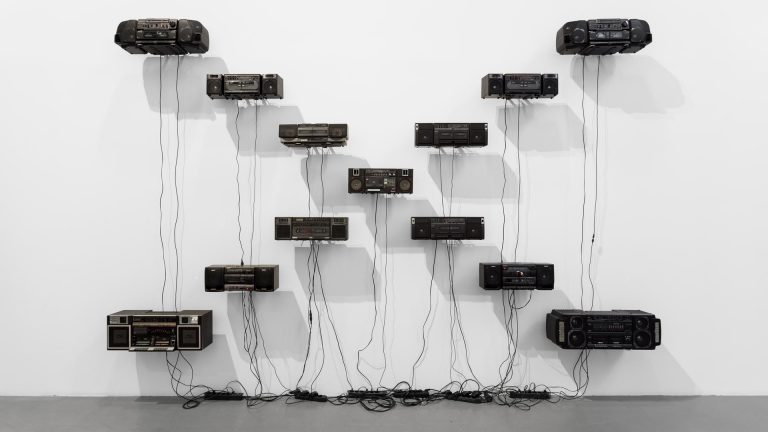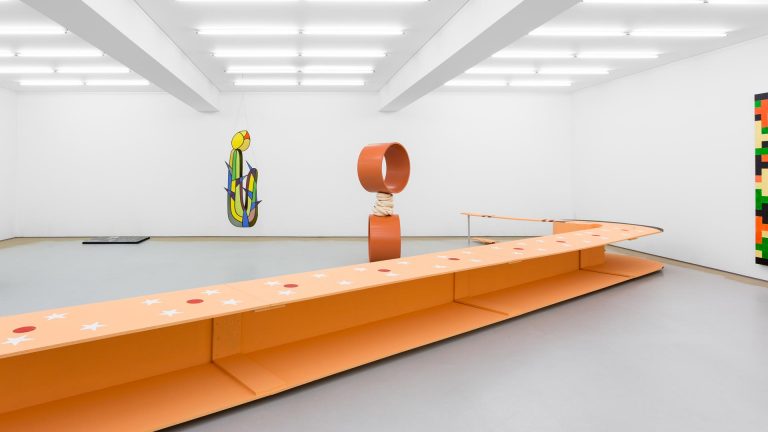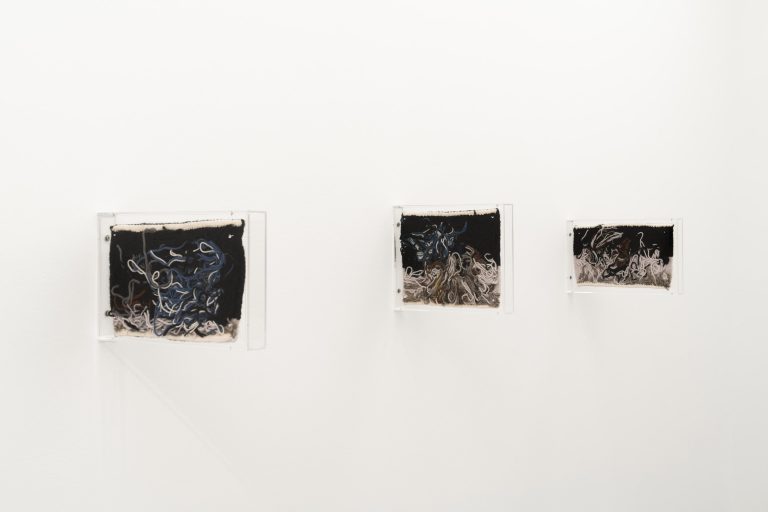Artist: Joanna Piotrowska
Venue: MADRAGOA, Lisbon, Portugal
Date: January 24 – March 7, 2020
Photography: all images copyright and courtesy of the artist and MADRAGOA, Lisbon
The images created by Joanna Piotrowska, whether captured in photographs, on film or which come to life in front of the viewer in the form of performances and installations, are wrapped in a sense of ambiguity, despite the fact that everything is clear and in plain sight. The tension is triggered by the reversibility of the situations, gestures and actions staged, which focus on the suspended moment of an encounter between two realities, condensed into images that are never univocal, but can be interpreted in a sense or in the other. An encounter between two people, between those who perform and those who undergo an action, with an invisible enemy, between human beings and objects, and even when the protagonist is a single person, the gestures or the pose evoke a doubling, showing the essence of Joanna Piotrowska’s work to be found in the inner investigation and in bringing out the psychic mechanisms that operate in different contexts.
In the new series of photographs Enclosures, started in 2018, the human figure is completely absent, even if the project is in continuity with the reflection developed in the previous production in which the body is the protagonist. In particular with the series Frantic, presented at Madragoa in 2016: the subjects of the photographs are individuals struggling with the construction of shelter made with domestic objects, to carve out an additional intimate space inside their home, which from being a comfort zone unwittingly became a trench, or a cage, pushing one to wonder about the profound meaning of feeling protected and at home. Enclosures shows the interiors of other cages, those of the zoo, and other objects, those used by animals in captivity, revealing the strong human projection on the concept of nature, the domestication intent disguised behind an apparent respect of the wild, the perpetuation of the exercise of the human domain. The reconstruction of a cosy natural environment reflects only a human idea of habitat tailored for animals and the outcome is that of a stage design for a show aimed at entertaining the public rather than an ideal environment for the life of animals.
In addition to the subject depicted, the display of the works, conceived in relation to the gallery space, highlights these mechanisms.
To welcome the viewer on the ground floor are two wallpapers, each showing a window overlooking an empty enclosure, delimited by walls, inside which a wild space is simulated, appearing as a continuation of the real space trampled by zoo visitors. The continuity of the landscape on both sides of the window makes it similar to a screen or mirror that duplicates the space, altering its perception, a mise en abyme that leaves the viewer confused, uncertain of his position inside or outside the enclosure, of his role as an observer or observed. In the other wallpaper, the aperture replicates, with its organic profile, the natural conformation of a rocky wall, but the grotesque and false effect of the reconstruction clearly denounces its fictitious and artificial nature, still underlining that the true purpose is the entertainment behind the desire to make animals feel at home. There are no animals in all the photographs of the series, the gaze lingers on the miserability of these empty enclosures, unpopulated dioramas, as bleak as a disco in daylight.
To underline that the human condition and behaviour are the real focus of this research, some spindles, elements of cage structures identified in the human daily life, are multiplied in their height up to join the roof with the floor of the room, delimiting the space of a cage inside the gallery. Their bright colours, which conceal captivity with the circus fanfare, come from the dyes used in food and to paint wooden tools and toys intended for animals, in yet another tilt between aesthetic human need projected on the feral world.
The photographs from the series Animal Enrichment frame some objects in the neutral environment of a pose studio, supported by hands that carefully and delicately offer them to the eye, showing their details and alluding to their functioning, halfway between a game of prestige and a teleshopping. These are objects including a rope, a mirror attached to a chain, a metal basket, props for the zoo show, which held in someone’s hands become weird sensual fetishes.
Joanna Piotrowska, 2020, exhibition view, MADRAGOA, Lisbon
Joanna Piotrowska, Enclosure, 2019, wall paper, site specific dimensions
Joanna Piotrowska, 2020, exhibition view, MADRAGOA, Lisbon
Joanna Piotrowska, Untitled, 2019, silver gelatin hand print, 95 x 120 cm
Joanna Piotrowska, 2020, exhibition view, MADRAGOA, Lisbon
Joanna Piotrowska, Stainless steel, double sided mirror II, 2019, silver gelatin hand print, 73 x 58 cm
Joanna Piotrowska, 2020, exhibition view, MADRAGOA, Lisbon
Joanna Piotrowska, Enclosure, 2019, wall paper, site specific dimensions
Joanna Piotrowska, Rope, 2019, silver gelatin hand print, 73 x 58 cm
Joanna Piotrowska, 2020, exhibition view, MADRAGOA, Lisbon
Joanna Piotrowska, Enclosure XXXI, 2019, silver gelatin hand print, 130 x 110 cm
Joanna Piotrowska, 2020, exhibition view, MADRAGOA, Lisbon
Joanna Piotrowska, Stainless steel, double sided mirror IV, 2019, silver gelatin hand print, 73 x 58 cm
Joanna Piotrowska, Animal Handling Gloves, 2019, silver gelatin hand print, 30 x 24 cm
Joanna Piotrowska, 2020, exhibition view, MADRAGOA, Lisbon
Joanna Piotrowska, Enclosure XL, 2019, silver gelatin hand print, 24 x 30 cm
Joanna Piotrowska, Greens Feeder, 2019, silver gelatin hand print, 73 x 58 cm
Joanna Piotrowska, 2020, exhibition view, MADRAGOA, Lisbon







